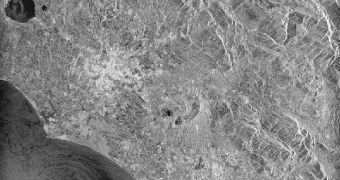Last week, after a final thruster firing, the ERS-2 Earth-observation satellite finally ended its glorious, 20-year career in service to the European Space Agency (ESA). The spacecraft is now parked in a safe orbit, ensuring that it will never collide with other space debris.
Its final mission ended a few weeks ago, and experts spent the time maneuvering it into the correct position, making good use of all remaining fuel. ERS-2 was a part of the European remote sensing satellite (ERS) program.
In order to deactivate and decommission the spacecraft, experts needed to ensure that all systems were shutdown and made safe, and also that no potential hazards were left operational on the spacecraft.
In order to achieve these objectives, the average altitude at which the instrument flew was reduced from 785 kilometers to 573 kilometers, therefore significantly reducing the risk of space collisions.
After this step was completed, the team turned its attention to “passivating” the spacecraft. In order to do that, they burned all the fuel left in ERS-2's reserves, and made sure that all pressurized systems posed no danger to the structural integrity of the probe.
“As soon as we saw fuel depletion occurring, a series of commands was sent to complete passivation, before shutting the satellite down for good. The last command was sent at 13:16 GMT on 5 September,” ERS-2 operations manager Frank Diekmann announces in an ESA press release.
However, the expert was keen to point out that the usefulness of the long-lived mission will not end with its official retirement. “We will continue exploiting data gathered by ERS-2, especially the radar imagery,” explains the ESA Director for Earth Observation Programs, Volker Liebig.
“Combining this rich scientific store with new data delivered by improved radar instruments on the GMES Sentinel-1 mission will generate strong synergies as we work to understand our planet's climate,” the official goes on to say.
He adds that ERS-2 will remain in Earth's orbit for an estimated 15 years, before atmospheric drag captures it and pulls it into the atmosphere. At that time, most of the enormous satellite will burn up, its debris scattered over large swaths of the ocean.
“ERS-2 deorbiting is being conducted in compliance with ESA's space debris mitigation requirements. This indicates the strong commitment by the Agency to reducing space debris, which can threaten current and future robotic and human missions,” says the Head of the ESA Space Debris Office, Heiner Klinkrad.

 14 DAY TRIAL //
14 DAY TRIAL //